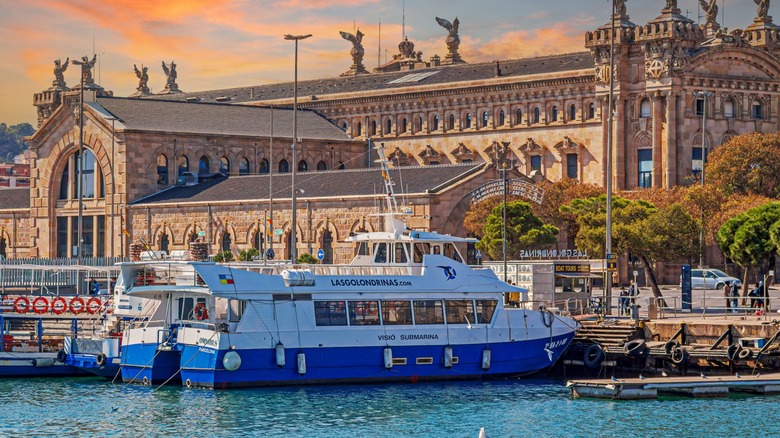Detroit: A Top Destination for Accessible Travel
When planning a dream vacation with mobility issues in mind, it’s essential to consider destinations that offer inclusive and accessible experiences. Detroit is quickly becoming one of the most accessible cities in the United States, especially for travelers using wheelchairs. With its commitment to accessibility, the city provides a range of options for those seeking an enjoyable and barrier-free travel experience.
Accessibility and Public Transit in Detroit
Detroit has received high praise for its accessibility features. A platform called Wander, which focuses on luxury accommodations and travel experiences, ranked the city as its top accessible destination, giving it a score of 9.7 out of 10. This ranking highlights the city’s perfect record on ADA compliance for public rail stations, with every station being fully accessible. Additionally, Detroit offers strong transit coverage, with approximately 5.53 transit stops per 100,000 people, making it easy for visitors to navigate the city.
Outdoor Adventures in Detroit
For those who love outdoor exploration, Detroit offers a variety of wheelchair-accessible trails. Nearly two-thirds — or 61.54% — of the city’s trails are designed to accommodate wheelchair users, making it a prime location for inclusive outdoor recreation. Whether you’re looking for urban hiking or scenic paths, Detroit has something to offer.
To reach the city, travelers can fly into the fully accessible Detroit Metro Airport, located about 25 minutes east of Ann Arbor. From there, the Detroit Air Xpress shuttle bus connects the airport to downtown. Alternatively, Amtrak’s accessible train service can take you directly to the downtown station.
Wheelchair-Friendly Attractions in Detroit
Once in the city, visitors can explore a range of wheelchair-friendly attractions. The Detroit Institute of Arts is a must-visit, offering a vast collection of over 65,000 works of art. The museum is spacious and easy to navigate, with wide aisles and accessible restrooms. It also provides adaptive options such as audio guides and ASL-interpreted tours.
Another notable attraction is the Charles H. Wright Museum of African American History, which offers an immersive and inclusive experience. Its permanent exhibit, “Still We Rise,” traces the history of the African diaspora through the Civil Rights Movement and beyond. The museum is fully accessible, featuring ramps, elevators, and ample space for exploration.
The Henry Ford Museum of American Innovation and Greenfield Village are also popular choices. The 250-acre complex includes historic exhibits that are mostly barrier-free. Some structures in the replica village, like the Weiser Railroad ride, have wheelchair lifts that can accommodate up to 500 pounds. The Ford Rouge Factory Tour is another accessible option, offering a glimpse into the inner workings of a real factory.
Exploring the Waterfront and Surrounding Areas
For a scenic stroll, visit the Detroit Riverwalk, a fully paved path stretching 3.5 miles along the river. The wide promenade offers stunning views of the Detroit skyline and the opposite shore of Windsor, Canada. Along the way, you’ll encounter sculptures, manicured gardens, and inviting public spaces. Cullen Plaza features a carousel highlighting local wildlife and mythical figures such as a river mermaid and river monster.
Just outside the city, Belle Isle Park is another gem worth visiting. Located across from Gabriel Richard Park, this island is designed with accessibility in mind. The Belle Isle Loop is a gentle-grade trail around the park, offering access to the oldest public aquarium in the country, the Dossin Great Lakes Museum, and the free-to-enter Belle Isle Nature Center. The island also features fishing piers, kayak launches, and a playground, all designed to be accessible.
Markets and Greenways
For a taste of local culture, visit Detroit’s Eastern Market, one of the country’s oldest outdoor farmers markets. Held on weekends and Tuesdays from June to September, the market is connected by the Dequindre Cut Greenway. This 20-foot-wide paved pathway leads to graffiti art, murals, and the Freight Yard, which includes a wine and beer garden, food trucks, and entertainment.
For another accessible waterfront trail, head north to the heart of Michigan’s Upper Peninsula, where a city on the lake’s shoreline offers boardwalk bliss and charm.
Conclusion
Detroit is a city that embraces inclusivity and accessibility, making it an ideal destination for travelers with mobility needs. From its well-designed public transit system to its accessible museums, parks, and trails, the city offers a wealth of opportunities for an unforgettable vacation. Whether you’re exploring the waterfront, visiting cultural institutions, or enjoying outdoor adventures, Detroit ensures a comfortable and enriching experience for all.



